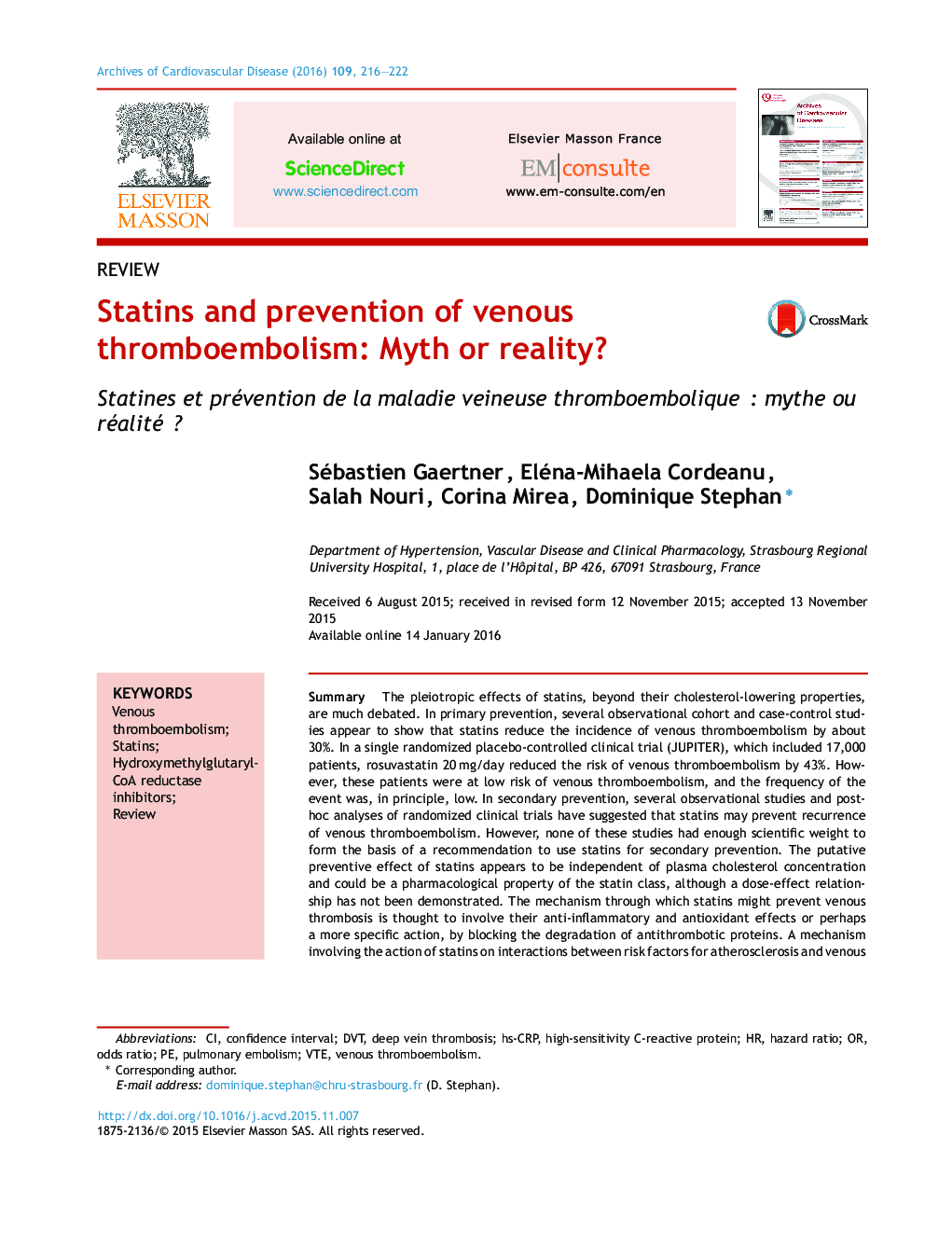| کد مقاله | کد نشریه | سال انتشار | مقاله انگلیسی | نسخه تمام متن |
|---|---|---|---|---|
| 2888664 | 1574336 | 2016 | 7 صفحه PDF | دانلود رایگان |
SummaryThe pleiotropic effects of statins, beyond their cholesterol-lowering properties, are much debated. In primary prevention, several observational cohort and case-control studies appear to show that statins reduce the incidence of venous thromboembolism by about 30%. In a single randomized placebo-controlled clinical trial (JUPITER), which included 17,000 patients, rosuvastatin 20 mg/day reduced the risk of venous thromboembolism by 43%. However, these patients were at low risk of venous thromboembolism, and the frequency of the event was, in principle, low. In secondary prevention, several observational studies and post-hoc analyses of randomized clinical trials have suggested that statins may prevent recurrence of venous thromboembolism. However, none of these studies had enough scientific weight to form the basis of a recommendation to use statins for secondary prevention. The putative preventive effect of statins appears to be independent of plasma cholesterol concentration and could be a pharmacological property of the statin class, although a dose-effect relationship has not been demonstrated. The mechanism through which statins might prevent venous thrombosis is thought to involve their anti-inflammatory and antioxidant effects or perhaps a more specific action, by blocking the degradation of antithrombotic proteins. A mechanism involving the action of statins on interactions between risk factors for atherosclerosis and venous thromboembolism is supported by some studies, but not all. In the absence of firm evidence, statins cannot currently be recommended for primary or secondary prevention of venous thromboembolism.
RésuméAu-delà de la réduction du taux de cholestérol plasmatique, les effets pléiotropes des statines sont discutés. En prévention primaire, plusieurs études observationnelles de type registres ou études cas-témoins semblent montrer un effet réducteur des statines d’environ 30 % sur la fréquence de la maladie veineuse thromboembolique. Un seul essai clinique contrôlé et randomisé (JUPITER), comparant la rosuvastatine 20 mg/jour au placebo et ayant inclus 17 000 patients, a montré une réduction du risque de maladie thromboembolique veineuse de 43 % dans le groupe statine. Il s’agissait, cependant, de patients à faible risque de maladie thromboembolique veineuse chez lesquels la fréquence de l’évènement était a priori basse. En prévention secondaire, quelques études observationnelles ou analyses post-hoc d’essais cliniques randomisés suggèrent un possible effet préventif des statines sur la récidive de maladie thromboembolique veineuse. Cependant, aucune de ces études n’avait le poids scientifique permettant de recommander l’utilisation des statines en prévention secondaire. L’effet préventif possible des statines paraît indépendant des taux plasmatiques du cholestérol et pourrait être relié à la classe pharmacologique elle-même sans qu’une relation dose-effet puisse être construite. Le mécanisme préventif des statines sur le thrombus veineux ferait intervenir les effets anti-inflammatoires et anti-oxydants des statines, voire une action plus spécifique bloquant la dégradation des protéines anti-thrombotiques. Une action des statines via des liens entre les facteurs de risque de l’athérosclérose et la maladie thromboembolique veineuse est discutée. Aujourd’hui, en l’absence de preuves fermement établies, les statines ne peuvent être recommandées en prévention primaire ou secondaire de la maladie thromboembolique veineuse.
Journal: Archives of Cardiovascular Diseases - Volume 109, Issue 3, March 2016, Pages 216–222
